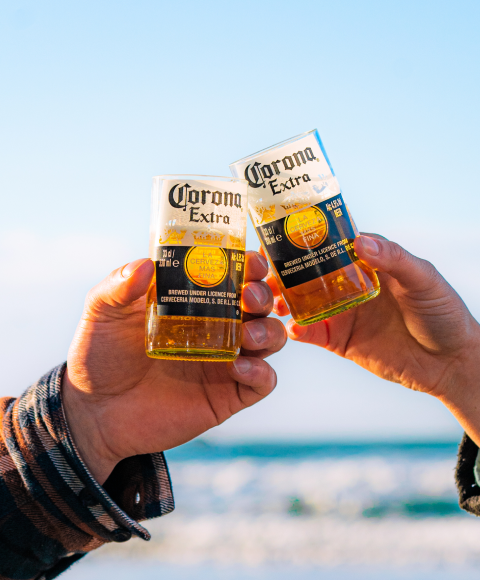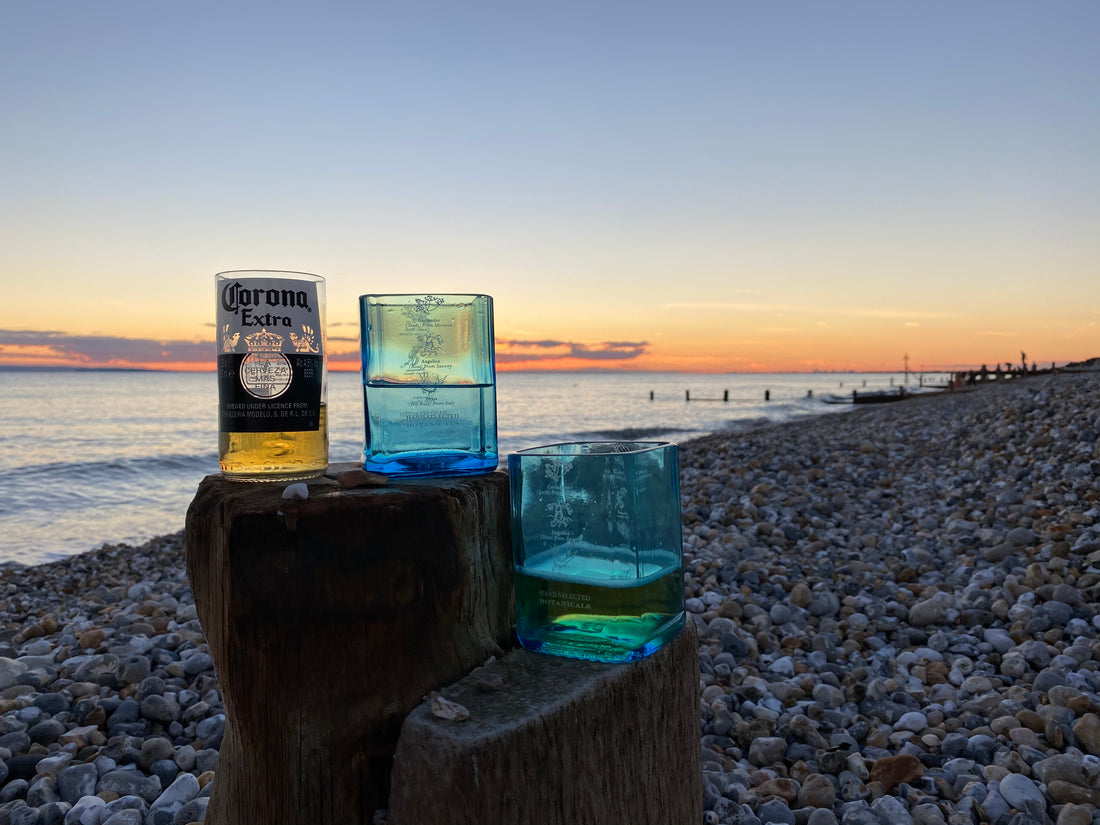Hello and welcome to the first of our blog series on "everything you need to know about upcycling". In this first blog post of our part 4 series, we will look at what the difference is between upcycling and recycling...
Upcycling and recycling glass bottles both involve reusing glass materials, but there are some key differences between the two processes:
To start, what is upcycling? Upcycling, also known as creative reuse, is the process of transforming by-products, waste materials, useless, or unwanted products into new materials or products perceived to be of greater quality, such as artistic value or environmental value.
...And what is recycling? Recycling is the process of turning waste materials into completely new materials and objects. This, in bottle terms means crushing the original item, turning it back to its original materials (cullet) and then reusing that material to create a bottle.
So, lets dive a bit deeper into that and make it more specific about SmoothEdge upcycling v.s recycling...
-
Purpose: Upcycling focuses on transforming glass bottles into new products or objects with higher value or aesthetic appeal, while recycling aims to break down the glass bottles into raw materials for manufacturing new glass products.
-
Process: Upcycling typically involves creative and artistic processes to repurpose glass bottles. They may be cleaned, cut and reshaped to create new items such as vases, lamps, or drinking glasses. Recycling, on the other hand, involves collecting used glass bottles, sorting them by colour, crushing them into small pieces called cullet, and melting them down in heat and carbon intensive factories to produce new glass products. For this to happen, the sorting process needs to receive bottles that aren't contaminated as this is when the bottles end up in landfills. Bars, clubs, pubs, even people at home don't clean their waste bottles so the chances of the bottles being recycled is minimal...
-
Energy Consumption: Our upcycling process requires less energy compared to recycling. When upcycling glass bottles, the primary energy input is a bit of elbow greece and minimal resources. Recycling, on the other hand, involves energy-intensive processes such as crushing, melting, and reforming glass, which require significant amounts of heat and electricity. For example, our upcycled glasses require much less carbon to produce compared to a glass made from recycled materials.
-
Waste Reduction: Both upcycling and recycling contribute to waste reduction by keeping glass bottles out of landfills. However, upcycling offers a more direct approach to waste reduction by repurposing the bottles into new functional or decorative items. Recycling, while still reducing waste, requires additional steps and energy expenditure to convert the glass bottles into new products.
-
Environmental Impact: Our process of upcycling glass bottles has a lower environmental impact compared to a glass made from recycled materials. Upcycling minimises the need for additional raw materials and reduces the energy consumption associated with the manufacturing process. Recycling, while beneficial in reducing waste, still requires energy and resources for collection, transportation, and processing.
Click the link below to shop our upcycled glassware and says cheers to a better tomorrow.


